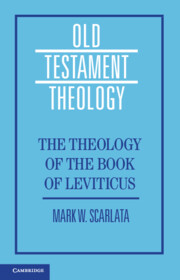Refine search
Actions for selected content:
177 results
18 - Modeling the Climate System
- from Part III - Scientific Investigations of the Climate System
-
- Book:
- Climate Change Science
- Published online:
- 13 November 2025
- Print publication:
- 20 November 2025, pp 108-112
-
- Chapter
- Export citation
7 - Decolonization and the Struggle for Kenya’s “Migrated Archives”
- from Part II - Struggle to Reveal
-
- Book:
- Curating the Colonial Past
- Published online:
- 12 September 2025
- Print publication:
- 02 October 2025, pp 236-276
-
- Chapter
- Export citation
Remaking a Sovereign Landlord: Property and Dispossession Along the Basra Oil Frontier
-
- Journal:
- Comparative Studies in Society and History , First View
- Published online by Cambridge University Press:
- 26 September 2025, pp. 1-27
-
- Article
-
- You have access
- Open access
- HTML
- Export citation
Between Communal, Emphyteutic, and Private Property: Liberal Experimentation on Agricultural Land in Nineteenth-Century Bolivia
-
- Journal:
- The Americas , First View
- Published online by Cambridge University Press:
- 25 September 2025, pp. 1-24
-
- Article
-
- You have access
- Open access
- HTML
- Export citation
Resurrecting the African Independent Pentecostal Church: Land, Education, and the Politics of Reconciliation during Kenya’s Decolonisation, 1952–69
-
- Journal:
- The Journal of African History / Volume 66 / 2025
- Published online by Cambridge University Press:
- 01 September 2025, e12
-
- Article
-
- You have access
- Open access
- HTML
- Export citation
Chapter 5 - Love Your Neighbor (Leviticus 17–22)
-
- Book:
- The Theology of the Book of Leviticus
- Published online:
- 18 July 2025
- Print publication:
- 07 August 2025, pp 157-202
-
- Chapter
- Export citation
Chapter 4 - Inhabiting Sacred Space (Leviticus 8–10, 24–27)
-
- Book:
- The Theology of the Book of Leviticus
- Published online:
- 18 July 2025
- Print publication:
- 07 August 2025, pp 114-156
-
- Chapter
- Export citation
48 - The Economy of the Later Roman Empire
- from Part V - Issues and Debates
-
- Book:
- The Cambridge Encyclopaedia of Late Antique Art and Archaeology
- Published online:
- 04 July 2025
- Print publication:
- 31 July 2025, pp 839-856
-
- Chapter
- Export citation
7 - Precursors
- from Part IV - (Dis)Connected Pasts
-
- Book:
- Fractured Pasts in Lake Kivu’s Borderlands
- Published online:
- 17 July 2025
- Print publication:
- 31 July 2025, pp 227-248
-
- Chapter
- Export citation

The Theology of the Book of Leviticus
-
- Published online:
- 18 July 2025
- Print publication:
- 07 August 2025
Chapter 9 - Financial Infrastructures and Colonial History in Africa
- from Part II - Histories of Financial Infrastructures
-
-
- Book:
- The Cambridge Global Handbook of Financial Infrastructure
- Published online:
- 21 May 2025
- Print publication:
- 05 June 2025, pp 103-115
-
- Chapter
-
- You have access
- Open access
- HTML
- Export citation
7 - Territorial Disputes
- from Part II - The Individual in the Practice of the International Court of Justice
-
- Book:
- The Individual in the Law and Practice of the International Court of Justice
- Published online:
- 25 March 2025
- Print publication:
- 08 May 2025, pp 172-196
-
- Chapter
- Export citation
7 - Reparations for Victims of Grand Corruption
- from Part II - Putting Victims at the Center of Anti-Corruption Work
-
- Book:
- Fighting Grand Corruption
- Published online:
- 03 April 2025
- Print publication:
- 10 April 2025, pp 128-158
-
- Chapter
- Export citation
2 - Biomass
-
-
- Book:
- Bioprocesses
- Published online:
- 24 January 2025
- Print publication:
- 13 February 2025, pp 8-81
-
- Chapter
- Export citation
Chapter 10 - Romantic Poetry and Constructions of Indigeneity
-
-
- Book:
- The Cambridge Companion to Romanticism and Race
- Published online:
- 21 November 2024
- Print publication:
- 28 November 2024, pp 168-185
-
- Chapter
- Export citation
4 - Native Bonds, Native Rights
-
- Book:
- From Colonial Cuba to Madrid
- Published online:
- 14 November 2024
- Print publication:
- 21 November 2024, pp 147-177
-
- Chapter
- Export citation
Surveying, mapping, and translating: how property rights were created in Shanghai, 1860–1900?
-
- Journal:
- International Journal of Asian Studies / Volume 22 / Issue 2 / July 2025
- Published online by Cambridge University Press:
- 11 November 2024, pp. 272-292
-
- Article
-
- You have access
- Open access
- HTML
- Export citation
Housebuilding, land, and structural power: the case of mortgage market support schemes in England
-
- Journal:
- Business and Politics / Volume 27 / Issue 1 / March 2025
- Published online by Cambridge University Press:
- 18 September 2024, pp. 21-46
-
- Article
-
- You have access
- Open access
- HTML
- Export citation
5 - Other Language Ontologies
-
- Book:
- Language Assemblages
- Published online:
- 20 June 2024
- Print publication:
- 27 June 2024, pp 109-135
-
- Chapter
- Export citation
6 - The Black Body in Nature
- from Part I - Extraction and Abstraction
-
-
- Book:
- The Cambridge Companion to the Black Body in American Literature
- Published online:
- 09 May 2024
- Print publication:
- 16 May 2024, pp 86-98
-
- Chapter
- Export citation
